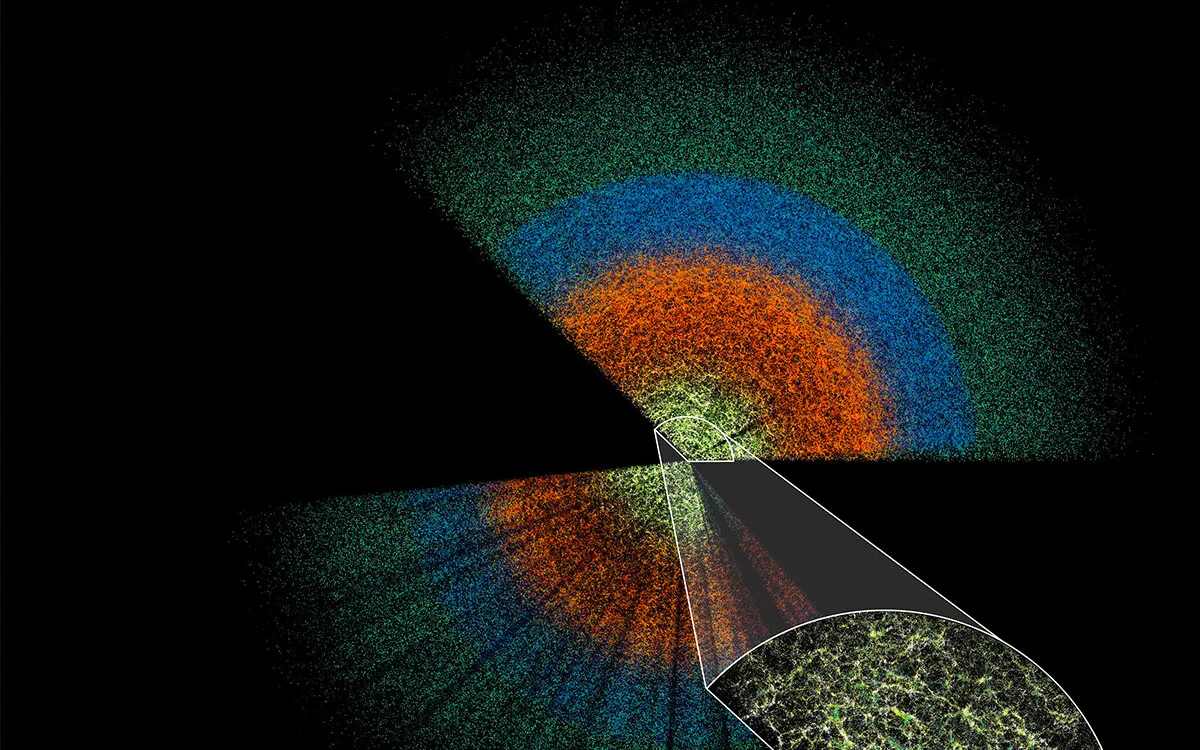
The Dark Energy Spectroscopic Instrument (DESI) is revolutionizing our understanding of the cosmos by mapping millions of celestial objects. This state-of-the-art instrument aims to shed light on dark energy, the enigmatic force responsible for the accelerating expansion of our universe. Recently, the DESI collaboration unveiled a groundbreaking dataset that is now available for researchers and astronomy enthusiasts around the globe to explore.
The newly released dataset is the largest of its kind, encompassing detailed information on 18.7 million celestial objects. This includes approximately 4 million stars, 13.1 million galaxies, and 1.6 million quasars—the dazzlingly bright objects powered by supermassive black holes at their cores. While the primary goal of DESI is to enhance our understanding of dark energy, this Data Release 1 (DR1) might also lead to significant discoveries in other fields of astrophysics, such as the evolution of galaxies, the nature of dark matter, and insights into the structure of our own Milky Way galaxy.
Stephen Bailey, a prominent scientist managing data for DESI at the U.S. Department of Energy's Lawrence Berkeley National Laboratory (Berkeley Lab), emphasized the potential of DR1, stating, "We might need to rethink our standard model of cosmology." He expressed excitement about the wealth of research possibilities this dataset could unlock for the astronomical community.
DESI is a collaborative international project involving over 900 researchers from more than 70 institutions, with leadership provided by Berkeley Lab. The instrument is installed on the U.S. National Science Foundation's Nicholas U. Mayall 4-meter Telescope at the Kitt Peak National Observatory in Arizona, which is operated under the NSF NOIRLab program. The data from DESI is freely accessible through the National Energy Research Scientific Computing Center (NERSC), where it is processed and stored.
Space enthusiasts can also dive into DESI's data via an interactive platform known as the Legacy Survey Sky Browser. The latest dataset significantly expands upon DESI's Early Data Release (EDR), offering roughly ten times more data and covering seven times larger an area of the sky compared to its predecessor.
The DR1 dataset comprises observations from the first year of the main survey, conducted between May 2021 and June 2022, along with a five-month validation period where researchers tested the instrument. The catalog includes celestial objects ranging from nearby stars in our Milky Way to galaxies billions of light-years away. As light takes time to travel to Earth, observing distant objects allows scientists to look back in time—DESI provides a window into our universe from the present day to 11 billion years ago.
Although DR1 represents just a fraction of DESI's eventual output, this 270-terabyte dataset offers an unprecedented wealth of information, including precise distances to millions of galaxies. Notably, it includes more than double the number of extragalactic objects compared to all previous 3D surveys combined, establishing DESI as the largest spectroscopic redshift survey ever conducted.
In its first year, DESI captured data on over 1 million objects monthly, a staggering achievement compared to its predecessor, the Sloan Digital Sky Survey (SDSS), which took approximately 25 years to gather data from 9 million unique objects. In 2024, researchers will utilize DR1 data to create the largest 3D map of the universe to date and achieve leading measurements of dark energy, showcasing DESI's commitment to advancing astronomy.
David Schlegel, a lead scientist at Berkeley Lab, likens the rapid progress of DESI to a version of Moore's Law for cosmological surveys, highlighting the project's ability to produce increasingly larger 3D maps of the universe every decade.
DESI employs an innovative method to collect light from distant galaxies using 5,000 fiber-optic eyes. Under optimal observing conditions, it can gather data from a new set of 5,000 objects approximately every 20 minutes, accumulating over 100,000 galaxies in a single night. John Moustakas, a professor of physics at Siena College and co-lead of DR1, remarks on DESI's unique capability to observe multiple independent objects simultaneously.
The instrument separates light from each galaxy into its spectral colors, allowing scientists to measure the redshift of light, which reveals the distance to each object. This capability enables researchers to create a detailed three-dimensional map of the cosmos and reconstruct its evolutionary history. Every night, images captured by DESI are automatically transferred to NERSC's supercomputers for analysis, a process that has been playfully dubbed "redshifts before breakfast."
Data transfer occurs via ESnet, the Department of Energy's dedicated high-speed network for science. This integrated research infrastructure allows for a seamless collaboration between experimental facilities and data analysis, significantly accelerating scientific progress. Daniel Margala, a scientific data architect at NERSC, notes that the transition to the advanced supercomputer Perlmutter enables researchers to process data nearly 40 times faster than previous systems, drastically reducing analysis time from months to weeks.
Researchers continually enhance their code to extract maximum information from the light collected, and upon reaching significant milestones, they reprocess the full dataset. The DR1 dataset took about a month to analyze on Perlmutter, showcasing the efficiency needed as DESI continues to gather more data. Currently in its fourth year of a five-year data collection plan, DESI aims to gather spectra for over 50 million galaxies and quasars before concluding its operations.
DESI's data release is designed not only to advance scientific understanding but also to support researchers who may lack access to large telescopes. A crucial aspect of this release is comprehensive documentation, aiding scientists—regardless of familiarity with the project—in navigating the dataset's contents. Anthony Kremin, a project scientist at Berkeley Lab, emphasizes the potential for groundbreaking discoveries, stating, "We're still discovering all the things you can do with this dataset, and we want the community to be able to try out all their creative ideas."